
The hammerhead sharks are a group of sharks in the family Sphyrnidae, so named for the unusual and distinctive structure of their heads, which are flattened and laterally extended into a "hammer" shape called a cephalofoil. Most hammerhead species are placed in the genus Sphyrna, while the winghead shark is placed in its own genus, Eusphyra. Many, but not necessarily mutually exclusive, functions have been postulated for the cephalofoil, including sensory reception, manoeuvering, and prey manipulation. Hammerheads are found worldwide in warmer waters along coastlines and continental shelves. Unlike most sharks, hammerheads usually swim in schools during the day, becoming solitary hunters at night. Some of these schools can be found near Malpelo Island in Colombia, the Galapagos Islands in Ecuador, Cocos Island off Costa Rica, and near Molokai in Hawaii. Large schools are also seen in the waters off southern and eastern Africa.

The whitenose shark is a species of shark of the family Carcharhinidae. The only member of the genus Nasolamia, it is found in the tropical waters of the eastern Pacific Ocean between latitudes 31° N and 18° S, between depths of 15 to 200 m. It can grow up to a length of 1.5 m. The whitenose shark is viviparous, with 5 young in a litter, and a birth size around 53 cm.
Asymbolus is a genus of catshark in the family Scyliorhinidae.
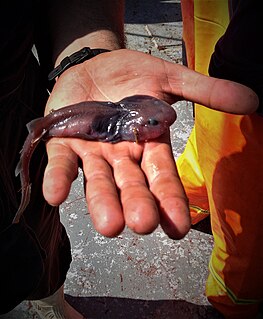
The lollipop catshark is a little-known species of deep sea catshark, belonging to the family Scyliorhinidae, and the only described member of its genus. A diminutive, bottom-dwelling shark of the outer continental shelf and upper continental slope, this species can be readily identified by its tadpole-like shape with a greatly expanded, rounded head and narrow body. The large head houses expanded gills, which are thought to be an adaptation for hypoxic conditions. This shark preys on crustaceans and fishes. Reproduction is aplacental viviparous, with females retaining egg cases internally two at a time until they hatch. There is no fishery interest in this species, and the International Union for Conservation of Nature (IUCN) lacks sufficient information to assess its conservation status.

The humpback cat shark is a cat shark of the family Scyliorhinidae in the order Carcharhiniformes, found in the northwest Pacific Ocean off Zhujiang, South China Sea, from the surface to 915 m. Its length is 39–41 cm. The largest specimen examined by Nakaya and Sato was 54.2 cm TL. The humpback catshark is a little-known oviparous deepwater catshark.

The velvet dogfish the only member of the genus Zameus, is a harmless sleeper shark of the family Somniosidae, found around the world between latitudes 64°N and 48°S, from the surface to 2,000 m. Its length is up to 84 cm. Although sharks within the family Somniosidae have generally been accepted to be non-luminous, Zameus squamulosus has photophores on its ventral epidermis.

The striped smooth-hound is a houndshark of the family Triakidae, found on the continental shelves of the subtropical southwest Atlantic from southern Brazil to northern Argentina between latitudes 30° S and 47° S, from the surface to 250 m. It can grow up to a length of 1.5 m. The reproduction of this shark is Ovoviviparous, with the length at birth up to 39 cm.

The brown smooth-hound is a houndshark of the family Triakidae. It is found on the continental shelves of the subtropical eastern Pacific, from northern California to the Gulf of California, as well as Ecuador and Peru between latitudes 43° N and 18° S, from the surface to a depth of 200 m. It can grow up to a length of 1 m. The reproduction of this shark is viviparous.

The sicklefin smooth-hound is a houndshark of the family Triakidae. Even some species look similar to Carcharhinus family, mustelus second dorsal fin is much bigger. It is found on the continental shelves of the eastern Pacific, between latitudes 33° N and 7° N. The difference between sharptooth smooth-hound and mustelus lunulatus, is that the lunulatus second dorsal fin origin far in advance of the anal fin. It can reach a length of up to 1.7 m. The reproduction of this shark is ovoviviparous.

The blackspotted smooth-hound is a houndshark of the family Triakidae found on the continental shelves of the subtropical eastern Atlantic from the Mediterranean to the Western Sahara, between latitudes 45 and 20°N, from the surface to a depth of 250 m. It can reach of a length of 1.5 m.
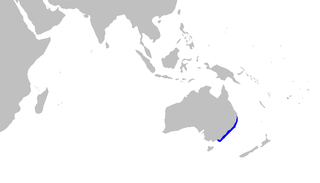
The Australian spotted catshark is a catshark of the family Scyliorhinidae, found only around Australia between 32 and 38°S, at depths between 10 and 180 m. It can grow up to 90 cm. Females of this species were observed as being reproductive year round. They are also confirmed as being a single oviparous species.
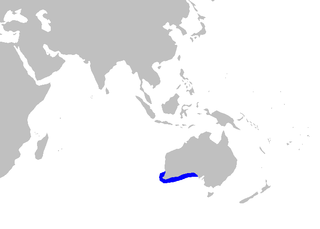
The western spotted catshark is a cat shark of the family Scyliorhinidae found only around southwestern Australia, at depths between 100 and 400 m. Its length is up to 60 cm. The reproduction of the western spotted catshark is oviparous.
The dwarf catshark is a catshark of the family Scyliorhinidae, found only off the coast of Western Australia, at depths between 200 and 400 m. Its length is up to 44 cm.

The orange-spotted catshark or rusty catshark, is a species of catshark, and part of the family Scyliorhinidae. It is found only off the coast of Western Australia, at depths between 25 and 540 m. Its length is up to 39 cm (15 in).
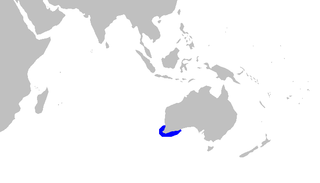
The variegated catshark is a cat shark of the family Scyliorhinidae, found off New South Wales and Western Australia at depths between 30 and 200 m. Its length is up to 41 cm. The reproduction of this catshark is oviparous.

The dense-scale lanternshark is a shark of the family Etmopteridae found in the southeast Pacific off Peru and Chile.
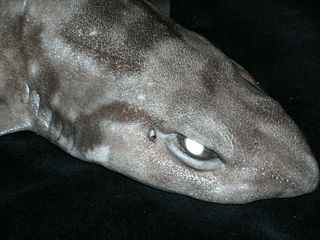
The blotched catshark is a little-known species of catshark, and part of the family Scyliorhinidae, found in the western central Atlantic Ocean. It inhabits banks of deep-sea coral at depths of 329–548 m (1,079–1,798 ft), feeding on cephalopods, shrimp, and bony fishes. This species can be identified by its wide body and head, and the dark saddle-like markings on its back. It also has small spots that fluoresce yellow under a blue light. Adult blotched catsharks have not been observed; the largest immature specimen is 49 cm (19 in) long. Like other catsharks, it is believed to be oviparous. This species is not dangerous to humans and has no commercial significance; the International Union for Conservation of Nature (IUCN) does not have enough data to assess its conservation status.
Figaro is a genus of catshark, and part of the family Scyliorhinidae. Until 2008, Figaro was generally considered to be a subgenus of Galeus. The two known species are found off Australia, inhabiting deep, offshore waters on or near the bottom. Figaro contains small, slender, firm-bodied sharks that bear distinctive crests of enlarged, spiny dermal denticles along the dorsal and ventral edges of their short caudal fins. The caudal peduncle is relatively long, such as that the anal and caudal fins are some distance apart. In adult males, the inner margins of the pelvic fins are fused together to form a subtle "apron" over the claspers. F. boardmani is a predator of fishes, crustaceans, and cephalopods, and is oviparous; less is known about the F. striatus. Both are harmless and are of no economic importance.

















